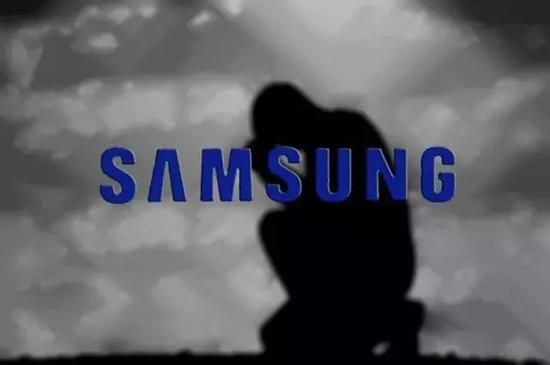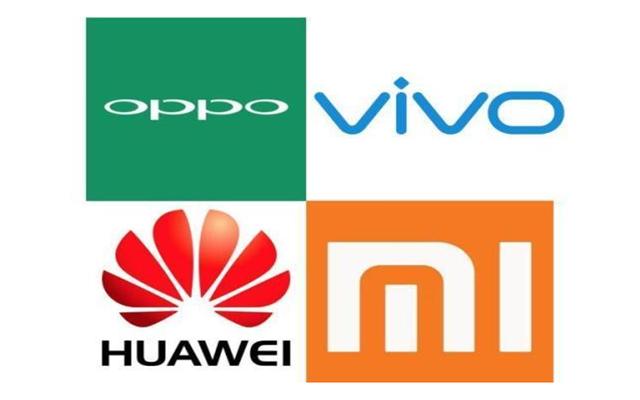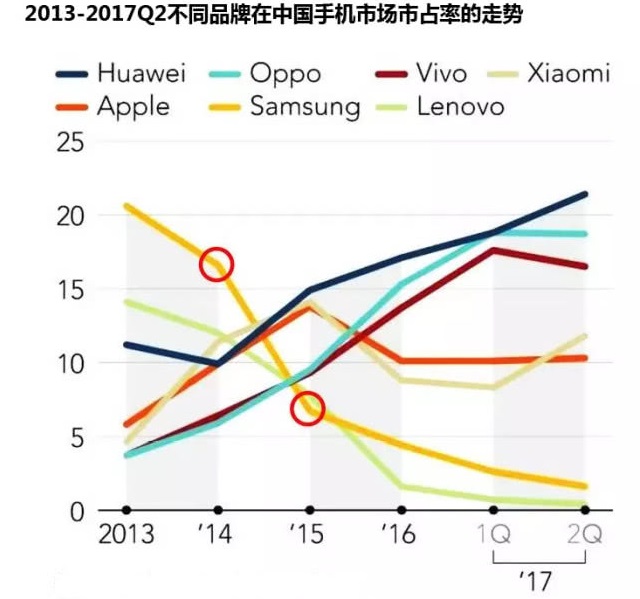Who is still using Samsung phones now?

Text / Zhou Xiongfei
Samsung, which once dominated smartphones, has fallen a bit lately.
According to Zinc Finance, Samsung China is completely withdrawing from “Made in China”. In the past two days, Samsung Electric Company in Kunshan, Suzhou has been liquidated and closed.
This is not the first time this has happened. As early as the end of September, they have closed their factory in Huizhou, which is also Samsung ’s last factory in China. Earlier, factories in Tianjin and Shenzhen were closed successively. Samsung said in response that the company has stopped making mobile phones in China.

Samsung Electric Co., Ltd. in Kunshan, Suzhou Picture from the Internet
This also means that Samsung’s mobile phone manufacturing industry has ended in China.
Simultaneously with the closing of the factory, there are also layoffs. At the beginning of last month, the news that Samsung China would lay off one-third of employees was revealed on the Internet. Subsequently, Samsung officials did not deny the news. At the same time, they responded that they had adjusted their related businesses in order to improve their competitiveness in China.
Closing factories and laying off employees, a series of actions are seen by the outside world as “demolition of the eastern wall, filling the western wall”, in order to deploy resources to other countries and regions with lower labor costs around the world to restart factories to ensure Samsung products Global availability.
However, what Samsung is doing at this time may not return to its original glory.
27 years of Samsung China’s ups and downs
Samsung ’s 27 years in the Chinese market seems to be over his “life”.
In 1992, with the establishment of diplomatic relations between China and South Korea, the trade and economic cooperation between China and South Korea was officially opened. It was also at this time that Samsung became enamored of China’s vast market. Just this year, Samsung invested USD 52 million in Huizhou, Guangdong, to establish Huizhou Samsung ElectronicsSubsidiary company.
Now, although Samsung seems to have entered the Chinese market earlier, the domestic market at that time was extremely fierce.
If you want to ask: what kind of talents were rich at the time? Many people’s minds will definitely come up with such a picture: a person holding “Big Brother” in his hand, wearing a suit, and driving wildly. At the time, this “big brother”, Motorola began selling in the domestic market in 1987.

In 1994, on the train from Shenyang to Dalian, the passenger in the sleeping car hit the elder brother. The picture comes from the Internet
In addition to Motorola, foreign brands in the domestic market at the time also had established mobile phone giants such as Ericsson, Nokia and Siemens. In 2002, with the launch of SCH-X430, Samsung ’s first color screen mobile phone, it really entered the Chinese mobile phone market. However, at this time, Samsung is still a child in front of “big brothers” such as Motorola and Nokia Like being.
According to the research report of CCID Consulting, Samsung ’s mobile phone sales in the Chinese market were 528,000 in 2008. Although the results seem to be acceptable, the brand has not entered the minds of consumers. You can see from the aspect- only 3.1% . At that time, Nokia’s market share had reached 67.3%.
Samsung’s weakness in the domestic market did not gradually change until 2011.
Samsung launched the Galaxy S2 that year, due to its cool appearance and the speed of its dual-core processor, it once became a popular item in the market. It is understood that 5 million units were sold in 85 days at that time. In this heat, the large-screen flagship Galaxy Note series and Galaxy S4 were launched. With these models, Samsung quickly opened the global market.
According to IDC data, in the global smartphone market in 2013, Samsung mobile phones shipped 390 million units, accounting for 30% of the global market share. And just this year, Samsung also surpassed Nokia with a market share of 18.7%, firmly occupying the No. 1 position in China’s smart phone market.
But the good times don’t last long. Around 2013, domestic mobile phone brands such as Lenovo, Coolpad, Huawei, Xiaomi, vivo, OPPO, etc. grew rapidly in the domestic market.Up.

The earliest brand entered was Lenovo. With the platform of big names such as Liu Chuanzhi, Lenovo ’s mobile phone sales climbed in the three years from 2011 to 2013, and its market share rose from 4.1% to 11.9%, becoming second only to Samsung. Mobile phone brands.
During the time of Lenovo’s founding, Huawei, which started with telecommunications equipment, and Xiaomi, which uses Internet thinking to make products, also started to deploy mobile phone business. In addition, OPPO and vivo also rely on the ubiquitous “wall advertising” and powerful lines Sales channels quickly opened the mobile phone market in China’s third, fourth and fifth tier cities.
For a while, Samsung quickly fell into a situation of “sweeping on all sides,” and these brands seized the “city” that Samsung worked hard to build.
According to Sigmaintell Consulting’s statistics, “the market share of different brands in the Chinese mobile phone market from 2013 to the second quarter of 2017”, from 13 years on, Huawei, Xiaomi, OPPO and vivo have almost risen The rising trend is robbing the Chinese market from Samsung. It is precisely because of this that the market share of Samsung mobile phones has also plummeted.

Market share of different brands in China’s mobile phone market from 2013 to the second quarter of 2017 Picture from the Internet
Among them, as Samsung ’s mobile phones did not take proper measures after the explosion in many places around the world, let this incident become the key point to promote Samsung ’s loneliness, and after that, it will be the first in 2018. In the quarter, Samsung ’s market share in the domestic market fell to 1%.
In response, at the end of 2018, Quan Guixian, president of Samsung Electronics Greater China, called out the slogan of Samsung mobile phone returning to China, hoping to break the 1% market share curse.
So, after Quan Guixian took office, on the one hand, the organizational structure of the mobile phone business was adjusted to change the original seven branches to 23 branches. Simultaneously